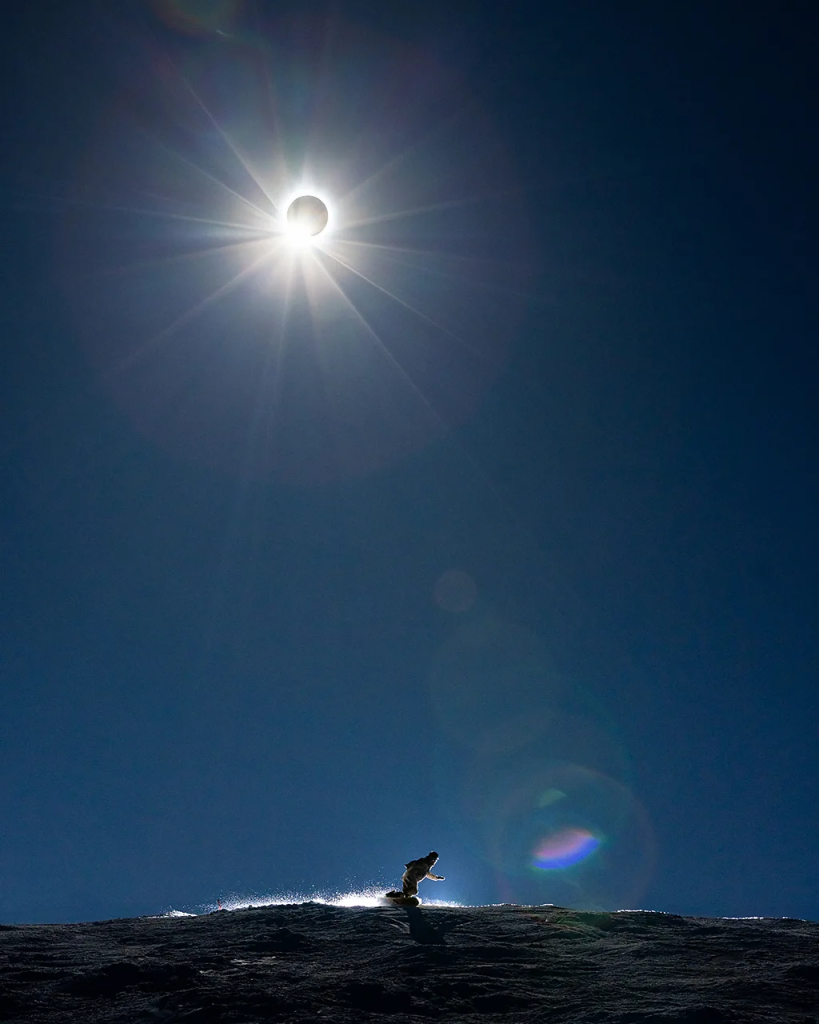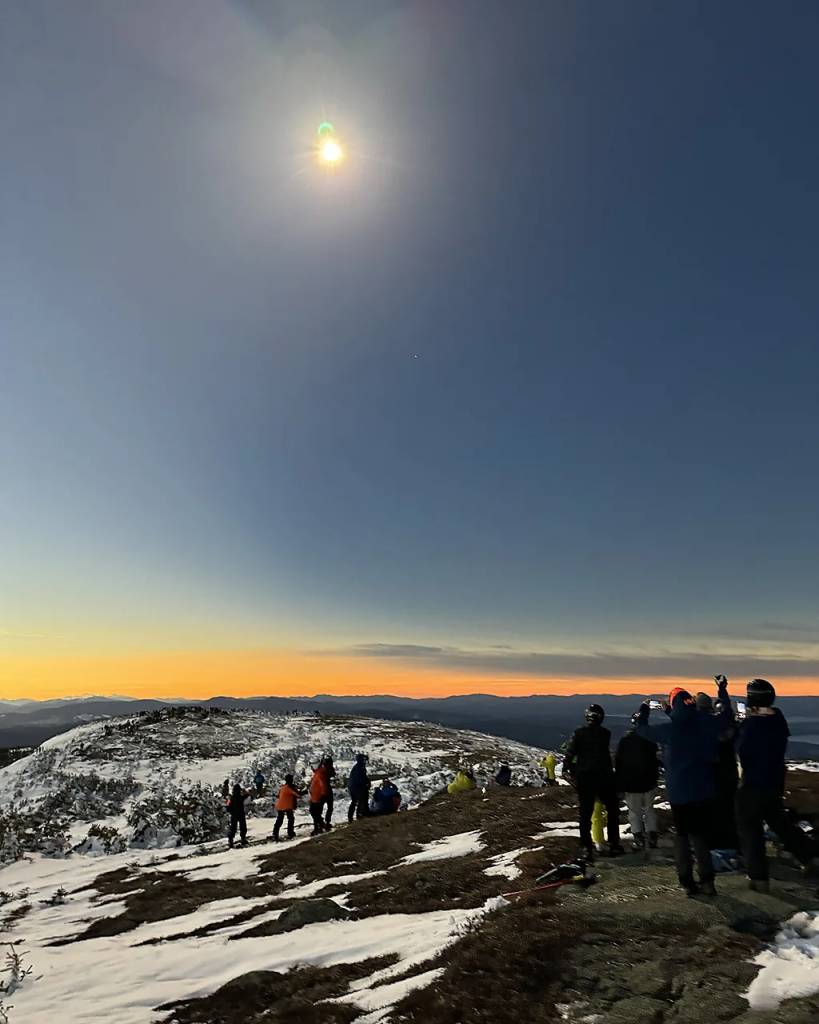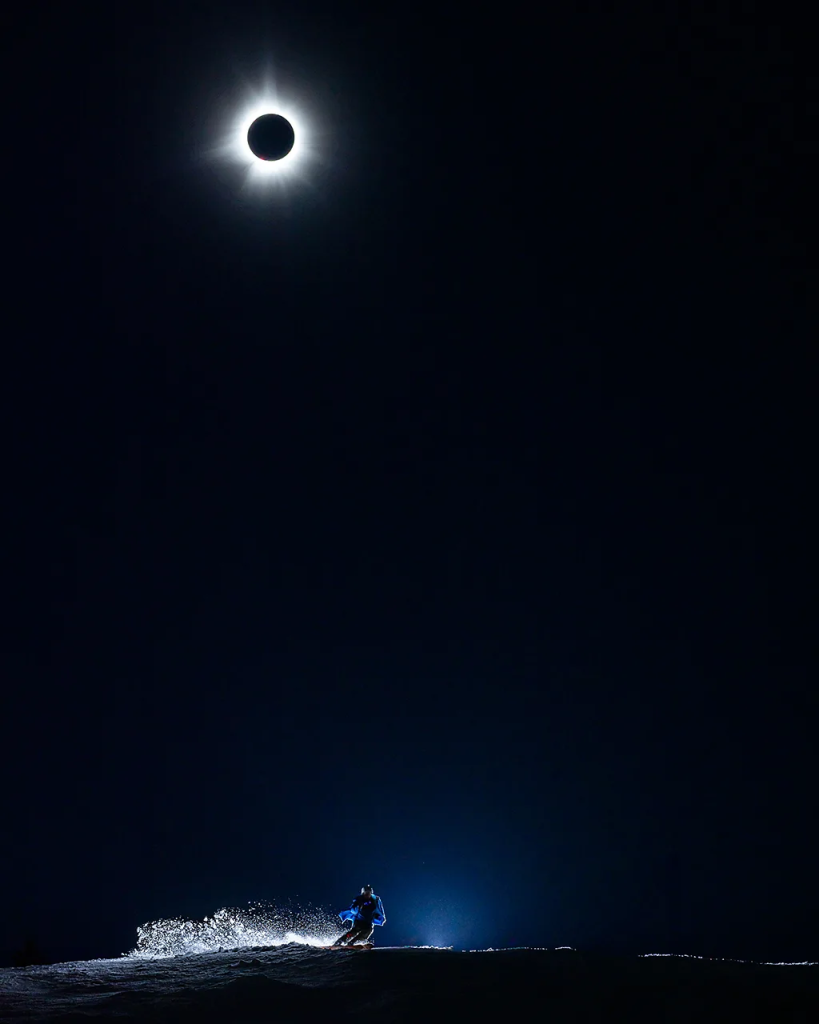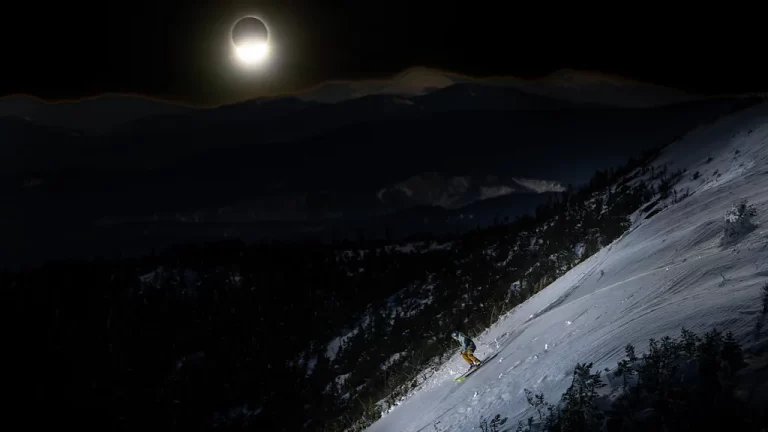On 8 April, the total eclipse was only visible from a handful of ski resorts across the world – including two in Maine.
Sometimes you can't help but feel lucky to be alive. The recent total eclipse was only visible from a handful of ski resorts across the world – all of them in the north-eastern US and Canada – and on 8 April I got a perfectly clear 55F (13C) bluebird ski day on top of a mountain in the US state of Maine.
The icing on the cake was a 2ft surprise snowstorm a few days earlier, frosting the mountain in a sparkly white for soft spring turns and reflection under the big sky.

I had driven deep into the country's most forested and most rural state about three hours north-west of my home in Portland for these infinite three minutes and 27 seconds. Others poured in from all over the country, likely walking past one of the Moon's largest meteorites on loan at Portland International Jetport in honour of the eclipse.
That's because Saddleback and Sugarloaf ski resorts, located deep in the Maine woods, were among the US' only ski areas (all in the east) where you could see the total eclipse. The celestial mountains and lakes in these woods, once praised by Henry David Thoreau who said he travelled Maine’s wilderness “to live deliberately”, are an all-season dream for hiking, fly fishing and camping – and for looking at the cosmos.
Skiing here is freedom to explore nature, and on 8 April the playground extended far into the solar system, reminding us not to take anything on this planet for granted.
Getting a front seat to the Sun and Moon was worth every effort of getting to the summit of Saddleback Mountain. Kicking off my skis at the top of the Kennebago Quad chairlift, I hiked up another half a mile, digging in my poles and breaking a sweat under my ski jacket. I crossed into the world's longest hiking-only footpath spanning 14 states, the Appalachian Trail, to follow the line of skiers and snowboarders up and over one hump down the saddle of the horse-shaped mountaintop to another, finally reaching 4,120ft.
A wild region
Saddleback's Rangeley Lakes Region and neighbouring Sugarloaf Mountain ski resort in Carrabassett Valley sit in a vast wilderness region ideal for eclipse viewing; further north is New England's first International Dark Sky Sanctuary.

When I arrived at what felt like the top of the world, there were a few dozen other skiers already there. One was making a snowman to my right; another was unfolding his camp chair on my left. None of us were prepared for the unimaginably vibrant golden hour we usually see before sunset.
The fireball beaming down on the glistening snow-covered lakes and mountain caps turned the rock face a brilliant yellowy brown. The Moon – 400 times smaller and 400 times closer than the sun – passed between the Sun and the Earth, casting a shadow on us and uniting this small community of skiers with the rest of life on Earth.
Since it won't happen again over Maine until 2079, if I never get another ski day under another eclipse again, after this one I'm good for life.
You could tell something monumental was happening without even looking up
Down the road at Sugarloaf Mountain ski resort, a Maine skier named Matthew Walter was timing his ski run under the eclipse. “The little bit of light that got through the corona shimmered across the snow and cast shadows from different angles than I was used to, which made for some surprise bumps here and there,” said Walter. “It was definitely hard to look away from, but I'm glad I did. You could tell something monumental was happening without even looking up.”
As I watched, the sky went from day to dark-as-night, and then orange and pink like morning again, as if the sun had dipped below the horizon. An eerie and biting wind blew over the summit and the temperature dropped 10F within seconds to firm up the snow for a cool final run.

I was left with a final thought from a member of the Appalachian Trail Club directing us away from the delicate signs of alpine flora popping through the rocks and snow. He only pointed out what many of us had been thinking; how terrifying nature may have seemed before we knew so much about the Universe: “Just imagine being the Indigenous people and seeing an eclipse thousands of years ago without any explanation.”


